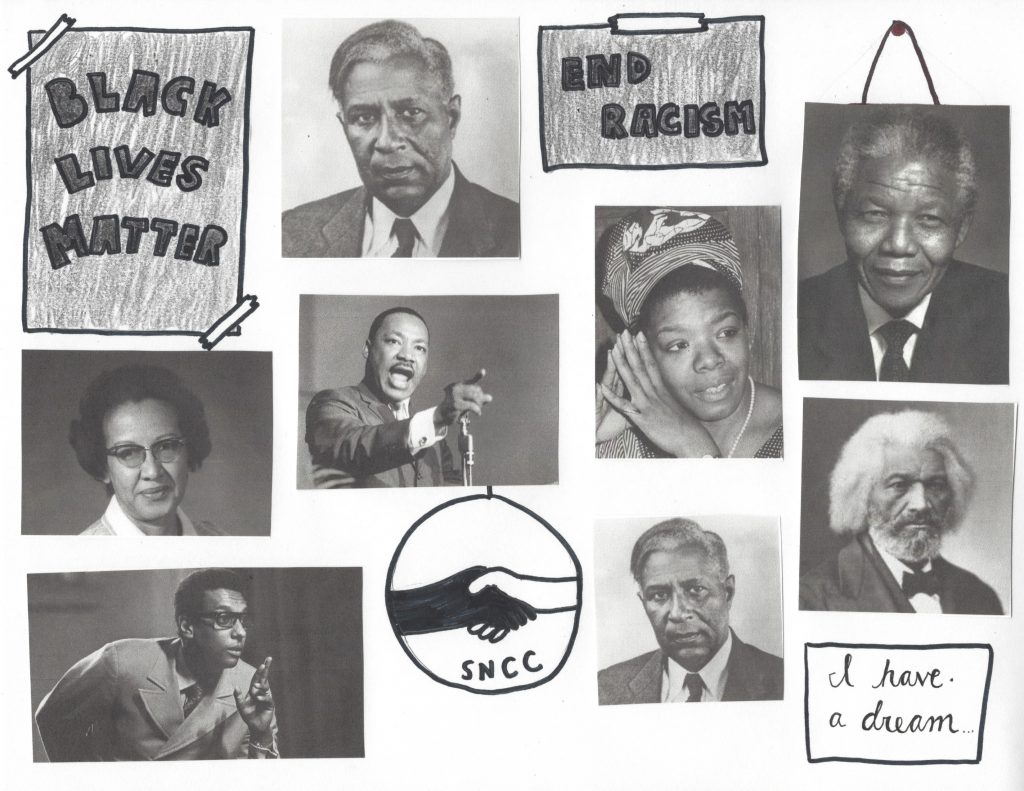
In 1926, historian Carter G. Woodson announced that the second week of February would be dedicated to learning and reflecting upon the black community and its history. In 1976, Black History Week was lengthened to a whole month by President Gerald R Ford. Why do we celebrate Black History for a whole month? And how do teachers respond?
Celebrating those who have made significant contributions to our country and who have achieved greatness despite looming setbacks is vital to remind students of the progress that has been made and that still needs to be made. This month makes us more knowledgeable and grateful of activist efforts — it serves as a platform for greater change in the current generation beyond the classroom.
It is evident that racial stigmas continue to exist in our country. The only way to overcome these racial barriers is to reflect on our past by confronting the bare truths head-on and avoiding the same mistakes that led America through oppressive laws, segregation, and other forms of public discrimination. By learning from the wrongdoings of our ancestors, we become more inclusive and enlightened by the harsh realities that bond us.
In schools, it is increasingly important to instill the truth in children and to learn about the history that makes up this evolving nation. Black History Month should promote an understanding and cause children to be more accepting and tolerant of one another. We should praise the struggles and sacrifices that came before us and the progress that has been made. But the need for change is not over. Children need to learn that there is still more work to be done regarding the inclusiveness and receptiveness of all races.
For this reason, it is imperative that today’s teachers embrace Black History Month. We need to realize that the only way to fight political and societal injustices is by educating and teaching children. Learning about important figures, such as Katherine Johnson, Maya Angelou, Frederick Douglass, Nelson Mandela, The Tuskegee Airmen, Stokely Carmichael, George Washington Carver, Garrett Morgan, Martin Luther King Jr., and countless others can teach students about episodes of triumph in the face of ignorance. Through this newfound knowledge, students can learn that they themselves can be the change this society needs and the activists that people look up to.
In addition, teachers can inform their students about the Harlem Renaissance, which was an an influential movement that greatly expanded the intellectual, social, and artistic world of black and American culture. The artistic surge lasted throughout the 1920s, when African Americans battled for their own rights by changing and reconstructing the American lifestyle. The Harlem Renaissance manifested itself through various artwork, music, literature, and theater. By learning about this specific juncture in history, students can celebrate the large impact that these individuals had on current American culture and intellectual thought.
Within RHS, significant efforts have been made to extend the knowledge of Black History to students. US History I teacher Mrs. Saladino notes that teachers are given notices and flyers during the month of February to relay to their students. She speaks about how important it is “to recognize black history throughout the year” and that “it shouldn’t just be confined to one month.” Additionally, Mrs. Saladino describes how she and other teachers make it their mission to teach and make connections between American slavery and present-day racial injustice: “For me, and many other American history teachers, we make black history a theme for our courses. In US I, we look at slavery, in pretty much every single unit. We make sure to come back to slavery in order to make those bigger connections; we can’t study American history or understand present-day American society without looking at this country’s history of slavery and race relations.”
Although awareness is present, she notes that it is sometimes difficult getting the point across when RHS moves at such a fast pace. Mrs. Saladino states, “It’s easy for things to get lost along the way, everyone is busy, students, teachers, administrators; there’s always so much going on in this community. You need to have people who are invested, people who will go out of their way to make learning about black history a priority.” If the efforts are not made to educate students about Black History, the chance to absorb those stories will not be obtained and progress will cease to exist in society.
Today, it is becoming increasingly important to encourage our youth to try and fight the racial inequalities still present in our culture. Mrs. Saladino considers our present social climate and the importance of solving it through education: “There’s so much division; there’s so much conflict; American society struggles with racial and wealth inequality. If we don’t take the time to learn about the past, we’re never going to understand why we have the problems we have today or how we should going about trying to fix them.”
Julia Zambito
staff writer
Graphic: Amelia Chen
